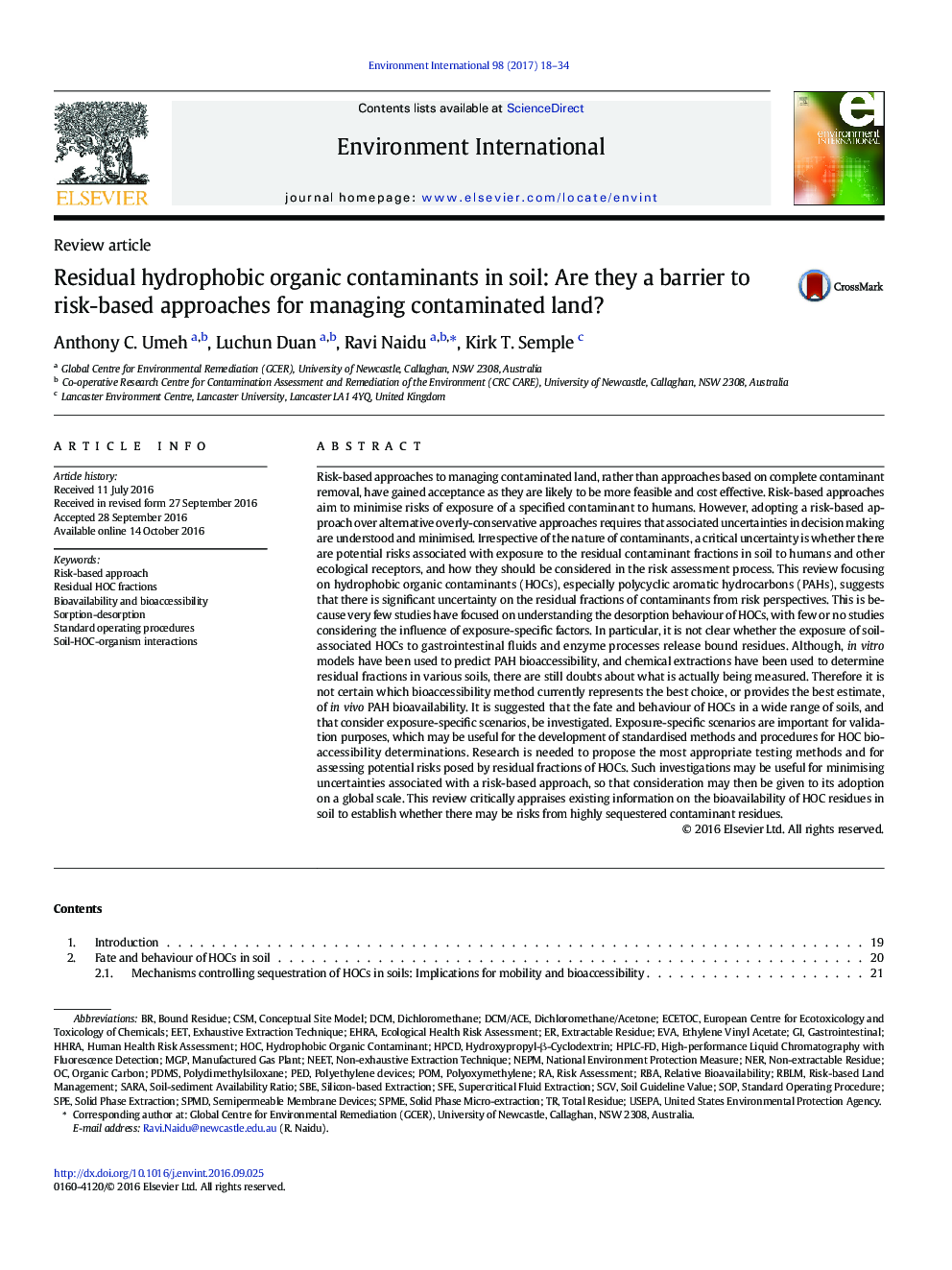| کد مقاله | کد نشریه | سال انتشار | مقاله انگلیسی | نسخه تمام متن |
|---|---|---|---|---|
| 5748451 | 1619032 | 2017 | 17 صفحه PDF | دانلود رایگان |
- Potential risks associated with residual HOCs in soils is critically reviewed.
- Fate of residual HOCs, especially in gut fluid
- Current classification scheme for HOC pools in soil is problematic.
- Standard operating procedures for HOCs bioaccessibility in contaminated soils
- Minimising uncertainties associated with a risk-based approach
Risk-based approaches to managing contaminated land, rather than approaches based on complete contaminant removal, have gained acceptance as they are likely to be more feasible and cost effective. Risk-based approaches aim to minimise risks of exposure of a specified contaminant to humans. However, adopting a risk-based approach over alternative overly-conservative approaches requires that associated uncertainties in decision making are understood and minimised. Irrespective of the nature of contaminants, a critical uncertainty is whether there are potential risks associated with exposure to the residual contaminant fractions in soil to humans and other ecological receptors, and how they should be considered in the risk assessment process. This review focusing on hydrophobic organic contaminants (HOCs), especially polycyclic aromatic hydrocarbons (PAHs), suggests that there is significant uncertainty on the residual fractions of contaminants from risk perspectives. This is because very few studies have focused on understanding the desorption behaviour of HOCs, with few or no studies considering the influence of exposure-specific factors. In particular, it is not clear whether the exposure of soil-associated HOCs to gastrointestinal fluids and enzyme processes release bound residues. Although, in vitro models have been used to predict PAH bioaccessibility, and chemical extractions have been used to determine residual fractions in various soils, there are still doubts about what is actually being measured. Therefore it is not certain which bioaccessibility method currently represents the best choice, or provides the best estimate, of in vivo PAH bioavailability. It is suggested that the fate and behaviour of HOCs in a wide range of soils, and that consider exposure-specific scenarios, be investigated. Exposure-specific scenarios are important for validation purposes, which may be useful for the development of standardised methods and procedures for HOC bioaccessibility determinations. Research is needed to propose the most appropriate testing methods and for assessing potential risks posed by residual fractions of HOCs. Such investigations may be useful for minimising uncertainties associated with a risk-based approach, so that consideration may then be given to its adoption on a global scale. This review critically appraises existing information on the bioavailability of HOC residues in soil to establish whether there may be risks from highly sequestered contaminant residues.
127
Journal: Environment International - Volume 98, January 2017, Pages 18-34
